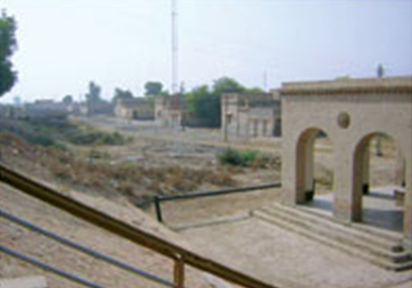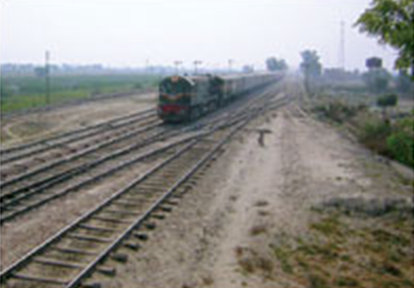Chohlistan
This is a collection of articles archived for the excellence of their content. Readers will be able to edit existing articles and post new articles directly |
Chohlistan
Destruction in the name of conservation
By Huma Khawar
DRESSED in a traditional magenta ghagra, adorned with beads and shells, arms full of white Chohlistani bangles, face fully made up, Nangu Lal dances to the beat of the drums at the Lok Virsa premises. Taking fire balls in his mouth, the 30-year-old is a man dressed as a woman. “I had never been out of Chohlistan,” he says, clearly excited at being in an urban setup. Thanks to the Lok Virsa Mela which ran in full swing for two weeks at the Shakarparian in Islamabad.
Married with five children, Lal, is second amongst his seven siblings and the only one who joined dancing as a profession. “To dress like woman comes naturally to me and it is an art, not every one can do it,” he tells me taking a break during his performance.
There is no fixed money. On an average Lal earns Rs500 per function. There are ten to twelve functions in a year where he gets a chance to perform. When he is not performing, he joins his family to help them in farming. Belonging to a Hindu minority community, Lal is full of praise for his Muslim neighbours in Chohlistan. At the Lok Virsa Mela, he is merged in the diversity of cultures all displayed under one roof.
Kalash women in their traditional dresses performing in their exotic dances, puppet theatres from Multan and Cholistan and the crazy bazigars walking on tightropes, the two-week festival is a much awaited event of the capital. Earlier known as the Artisans at Work or the Lok Mela, visited by diplomatic community more than the locals as they get to see the traditional music performance, dances, crafts and local and traditional food from the various provinces. Dating back to the early 80s, the Mela started as a projection of Pakistani arts and crafts, a major attraction of the Mela was to see the artisans at work, master craftsmen displaying the craft while at the Lok Visa premises.
Shopping is always very good and cheap at the stall at the Mela as there is no middle man involved in the transactions. The stalls are set up by the craftsmen and small-time business people and they sell directly to the eager visitors at the Mela. Kamalia khaddar, Sindhi ajrak, sussi and pottery are the items that attract residents and foreigners. Besides that the hand loom khees and chaddars. Traditional foods such as saag from Punjab, Pala fish from the Sindh, sajji from Balochistan and namak mandi ki karhai from NWFP give everyone a mouth watering time.



